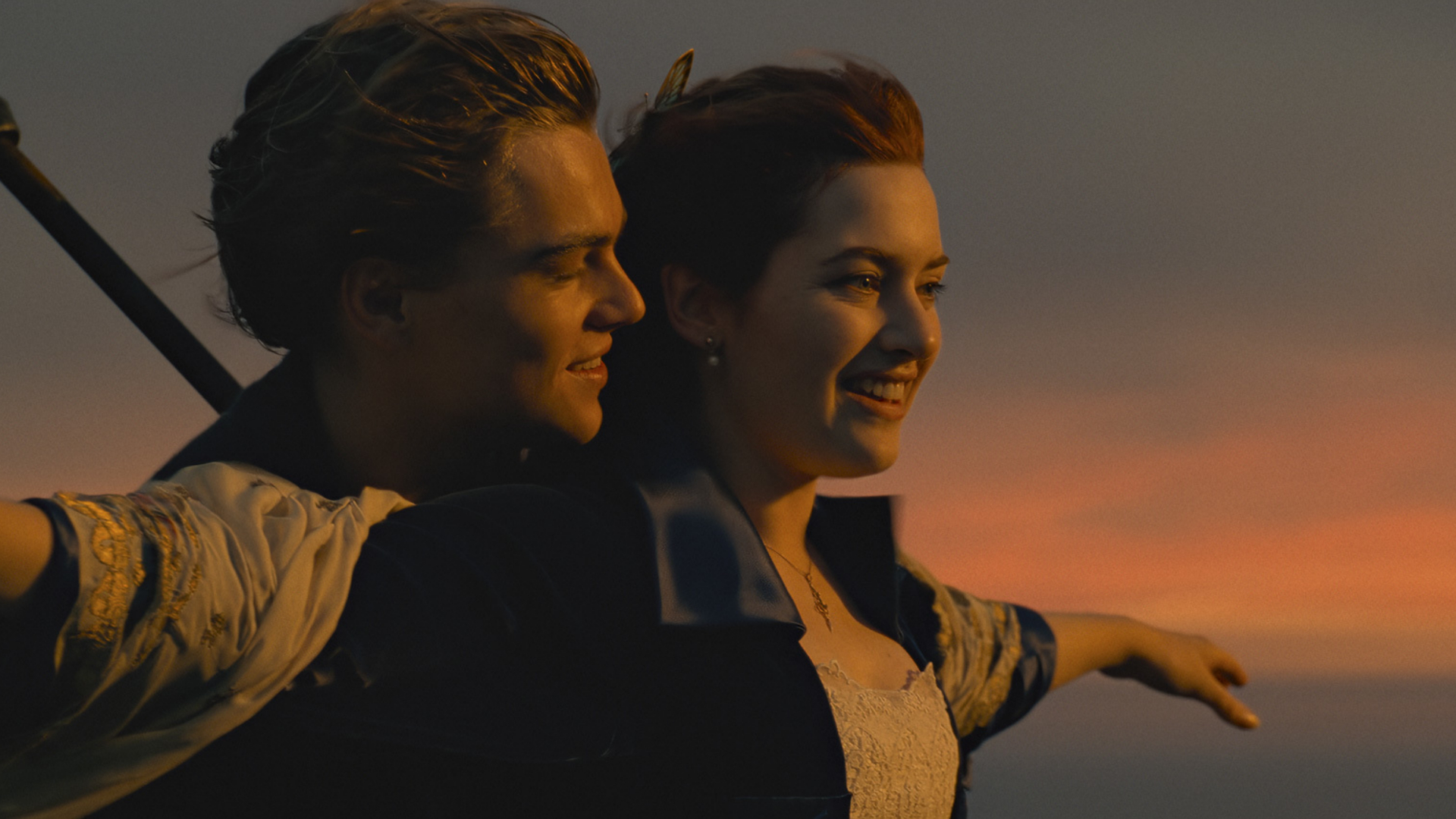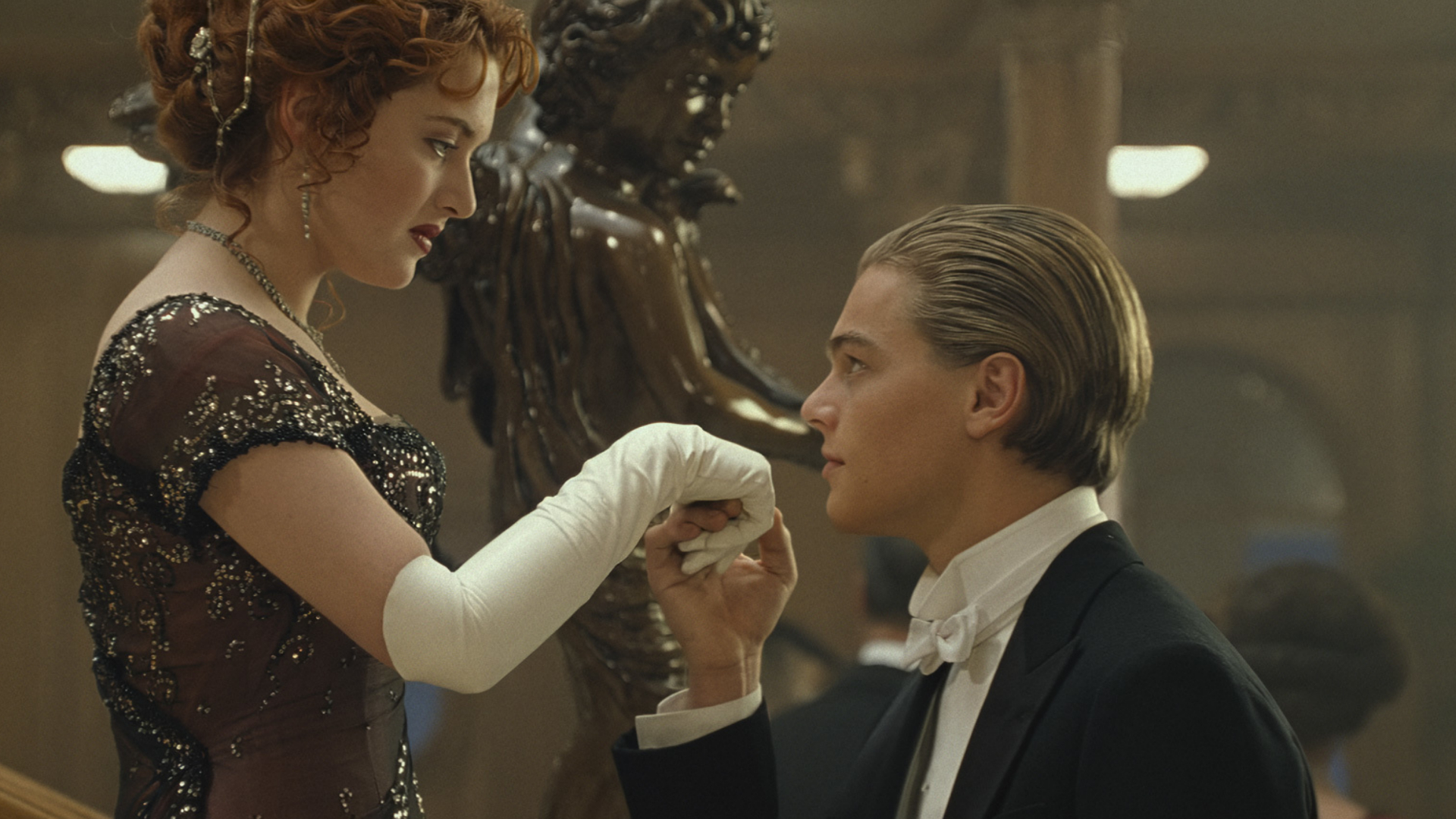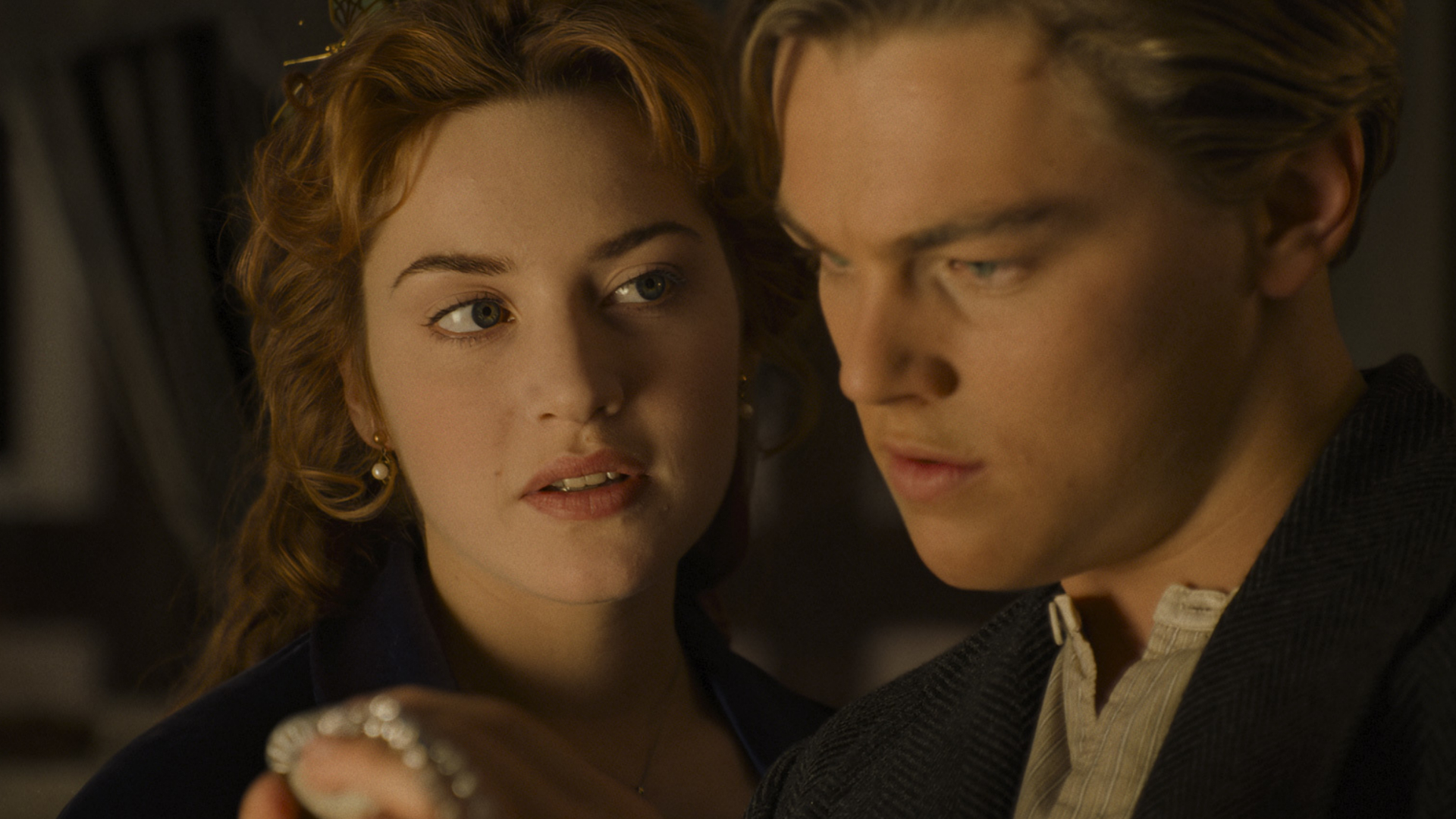James Cameron reflects on Titanic's enduring legacy – and his fears that the film would be a failure
Exclusive: James Cameron takes us back to Titanic for the film's 25th anniversary

"When I was in the last six months of finishing the film, I knew my career was over, I knew we weren't going to make a dime, I knew that we had put a gigantic dent in 20th Century Fox's treasury, and that I would never be forgiven for the rest of my life," James Cameron tells Total Film of Titanic, his epic romance-turned-disaster movie.
"But there's this amazing thing that happens in Hollywood, which is when you're in success, all is forgiven," he continues.
Success might be an understatement. Titanic is nothing less than a cultural phenomenon, once the highest grossing movie of all time (until another of Cameron's films, Avatar, overtook it) and recipient of a record-tying 14 Oscars nominations, of which it won 11, including Best Picture and Best Director.
Since its '97 release, Titanic's staying power has only increased. Its most famous quotes are pop culture staples ("draw me like one of your French girls"), the opening strains of composer James Horner and Celine Dion's "My Heart Will Go On" are instantly recognizable, and you'd be hard pressed to find a ship's bow from which someone hasn't shouted "I'm the king of the world!" or mimicked that iconic "I'm flying!" pose.
The Ship of Dreams

"Part of it is the actual underlying story of Titanic, which continues to fascinate," says Cameron of the film's enduring popularity. "Meaning the historical story, what really happened."
When RMS Titanic struck an iceberg and sank in 1912, over 1,500 people were killed, many of them freezing to death in the lethally cold waters of the Atlantic. The tragedy made headlines and lodged firmly in the public's imagination as the world tried to understand how such a stunningly luxurious ship, widely believed to be unsinkable, could now lie at the bottom of the ocean. Heartbreaking stories of heroism and loss are also attached to the disaster; Titanic's passengers and crew were forced to make unimaginably difficult choices as the ship tore in two and plunged to the depths on a pitch-black, moonless night in April.
"A lot of it is that it's a fictional story about love and death, mortality," Cameron adds. While his Titanic dramatizes much of what really did happen that night, its focus remains squarely on its central, invented characters.
Sign up for the Total Film Newsletter
Bringing all the latest movie news, features, and reviews to your inbox
Originally pitched by Cameron as "Romeo and Juliet on the Titanic," the film tells the story of Kate Winslet's Rose DeWitt Bukater and Leonardo DiCaprio's Jack Dawson, star-crossed lovers who meet on the doomed ocean liner. Just as Shakespeare's tragic couple was from warring families, Jack and Rose are from opposite social classes: first class passenger Rose lives in immense privilege, but is suffocating in an arranged engagement with Billy Zane's loathsome Cal Hockley. Jack, meanwhile, is a free-spirited and poor artist, who wins his third class ticket to board RMS Titanic in a card game moments before the ship departs. Jack and Rose's blossoming romance challenges the ship's strict class divide and frees Rose from her gilded cage – but, of course, disaster looms ahead of them.
After both survive the harrowing ordeal of the sinking itself, in the aftermath, Jack helps Rose onto a floating piece of debris. But, the makeshift raft can't handle his weight and hers, and Jack chooses to stay in the deadly cold waters, giving his life so that Rose can live.
As Cameron explains, Jack's death parallels real stories of the catastrophe. "Just as the historic tragedy was about sacrifice, and people being separated as the lifeboats left the ship, and families being torn apart, and the sacrifice and sense of duty of the people that stayed behind on the ship, which is what intrigues us about it, [is] the story of Jack committing himself to save her at all costs," he says. "There's the whole two hour build up of that relationship and that love story, but then it turns into a survival story, and his ultimate sacrifice to ensure her survival, and what that did to her. It didn't crush her and destroy her. She went on to live out the lessons that he taught her."
Titanic ends with an elderly Rose in bed next to her collection of photographs, which reveal a rich, full life – just as Jack promised her she'd have. "I always believe that a great love story is about a transfer of energy from one character to the other," says Cameron. "And he gave her back the spark of life and showed her who she could be. In his eyes, she was great, and so that allowed her to burst out of her cocoon. In that final shot, we see her whole life beautifully lived up until the age of 103 and we realize the scale of the gift that he gave her."
For the director, the film has the ideal recipe for a timeless love story. "You add such a perfect cast with Kate Winslet and Leonardo DiCaprio, a perfect supporting cast, the music – you just hear the music, and you go back to the experience of the movie," Cameron says. "James Horner's music in and of itself will break your heart, even if we had cast the ugliest actors in the world – but we didn't, we had Kate and Leo. So it just all added up. It fired on all cylinders in a way that just brought it home to this avalanche of feeling at the end of the movie. And I think people are still moved by it today."
A labor of love

Titanic was no easy undertaking. The ship and everything in it was recreated with meticulous attention to detail and care for authenticity. Cameron took multiple dives to the real wreck, which lies 12,600 feet deep, to research and shoot footage. Harland & Wolff, the company that built the actual ship, contributed copies of the original blueprints and the notebook of architect Thomas Andrews (played by Victor Garber in the film). Thousands of props were built to look exactly as they would have aboard the ship in 1912. Carpeting and lifeboat pulleys were supplied by the very same manufacturers that made the originals for RMS Titanic. The result of this mammoth undertaking is a reconstruction that's breathtaking in its accuracy, right down to the White Star Line logo adorning each piece of crockery.
All that's without mentioning the huge task of shooting the great ship's end. An entirely new studio was built in Baja California, Mexico to film Titanic's 1912 scenes. A combination of state of the art CGI, miniature models, and a scale replica of the ship that could break apart and tilt at different angles was used to film the sinking. The majestic Grand Staircase, so lovingly recreated, was flooded with thousands of gallons of seawater drawn from the Pacific, powerful enough that the wooden set of stairs dislodged and floated free (incidentally contributing to theories of what might have happened to its real life counterpart, which is missing from the wreck).
Unsurprisingly, the film was extremely expensive. Its rising budget meant 20th Century Fox traded the US distribution rights with Paramount Pictures in exchange for additional financing. It's understandable, then, that Cameron's nerves were particularly wracked in the lead up to the film's release. "They had their knives out for us," he recalls. "I don't mean that in any vindictive way. But, man, they just thought we'd spent all this money and it was all going to be a gigantic flop. And we started to believe it ourselves."
That fear lasted right up to the eleventh hour. "Until we started screening the film, we didn't know if people would respond to it," Cameron says. "Even when we saw that they were responding to it, we didn't know that people were going to go to see it. We were number one on the opening weekend, but only by a cat's whisker."
But something curious started happening after that first weekend that meant Cameron began to realize he might have a hit on his hands after all. "The second weekend, we went up. Movies don't go up. Movies only go down. There's this little law of gravity in Hollywood that says movies go down, they don't go up," he says. "That's when we realized we had stepped through the looking glass into some phantasmagorical world where movies could go up like a balloon."
Cameron believes that this meteoric rise is thanks to the film's emotional heft. "And what was happening, of course, was people were having this heartbreaking, moving experience," he explains. "And they were wanting to share it with people that they cared about, their friends, their social circle, or maybe they wanted to share it with their parents, or parents wanted to share it with their kids, who knows? But I mean, everybody was going at that point, from eight to 80."
Never let go
Everyone who found themselves transported by the film upon its release – and everyone who might have discovered it since – will get the chance to experience the movie in theaters once more. To mark Titanic's 25th anniversary, a remastered edition is getting a limited theatrical release in 4K 3D HDR and a high-frame rate.
"The one layer that [audiences] haven't been allowed in the last decade has been to experience it in a movie theater again," says Cameron. "Because with the remaster and the 3D and all the stuff that we've done to it over the years, it's absolutely gorgeous. The movie is gorgeous and it really wants to be seen on that screen and heard in a theatrical sound system."
For Cameron, it's not just the quality of the screening that matters, either – it's also the way Titanic is watched. "The key thing is to go and see all three hours and 15 minutes in a sitting, which is the deal you make with yourself when you go to see a movie, like The Way of Water, which is three hours and 12 minutes, and Titanic, which is three hours and 15 minutes," he says, name checking another extra-long epic of his. "You make a deal with yourself to go and have an experience. You're basically saying, 'Okay, rock my world. Do it. Bring it. I sit in the car at the beginning of the ride, and I go on the ride.' And I think that's what we say to ourselves, whereas at home, you can be more selective, you can pause it, you can watch it over multiple nights, you can multitask, you can text. But when you see it in a movie theater, you're making a commitment to have the full experience. And that's why I wanted to bring it back to celebrate the 25th anniversary."
It's also fitting that the film is returning to theaters in time for the most romantic day on the calendar. "I'm a big believer in Valentine's Day," says Cameron. "Let's take stock, let's see who we are. Let's see who has meaning in our lives and who we have meaning to." It's a sentiment that Jack and Rose would surely agree with.
The 25th Anniversary 3D re-release of Titanic arrives in cinemas on February 10. For everything else 2023 has in store for us, check out our roundup of the year's most exciting movie release dates.

I'm a Senior Entertainment Writer here at GamesRadar+, covering all things film and TV for the site's Total Film and SFX sections. I previously worked on the Disney magazines team at Immediate Media, and also wrote on the CBeebies, MEGA!, and Star Wars Galaxy titles after graduating with a BA in English.


